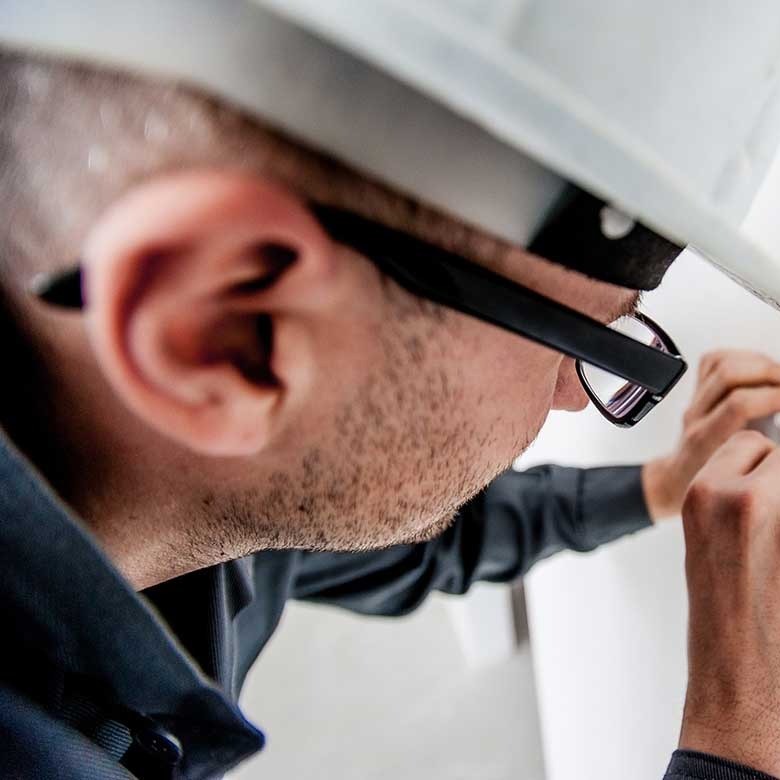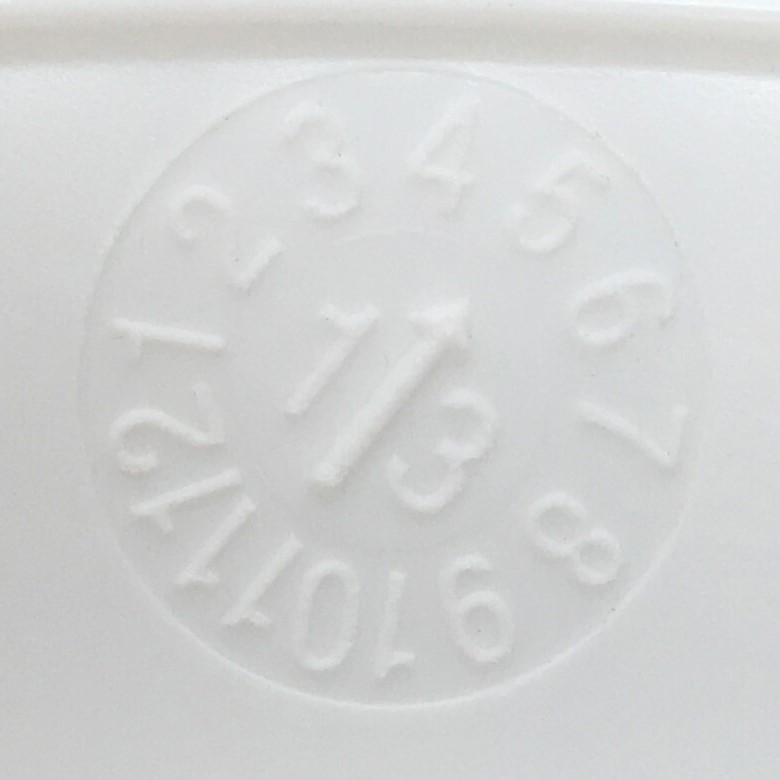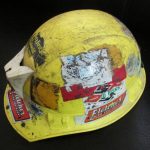Introduction: The Importance of Hard Hat Expiration
In workplace safety, hard hats are vital protective gear. They shield workers from head injuries caused by falling objects, impacts, or other hazardous conditions. However, wearing an expired hard hat can compromise safety and protection. Knowing how to tell if a hard hat is expired is essential for maintaining safety standards on the job. This article will provide key signs to look for, tips on hard hat inspection, and insights into the lifespan of hard hats to ensure optimal workplace safety.

Understanding the expiration of hard hats is crucial for all workers, especially in construction or industrial settings where the risks are higher. Regular checks can prevent accidents and reinforce a safety-first culture in the workplace.
Importance of Knowing Expiration Dates
Safety First
- Protection Against Head Injuries: Hard hats are specifically designed to absorb impact and reduce the risk of head injuries. An expired hard hat may not provide adequate protection, potentially leading to severe injuries if an accident occurs.
- Compliance with Regulations: Many safety regulations require employers and employees to maintain their safety equipment in optimal condition. Using an expired hard hat may lead to violations of these regulations, resulting in penalties.
Understanding Lifespan
- Material Breakdown: Hard hats typically have a lifespan of 2 to 5 years, depending on their material and usage conditions. Over time, exposure to UV light, extreme temperatures, and chemicals can degrade the hard hat’s material, compromising its efficacy.
- Environmental Factors: Hard hats used in harsh environments, such as construction sites, may experience more wear and tear, making regular inspections even more critical.
Key Signs to Look for When Determining Expiration
Visible Damage: Cracks or Dents
- Inspecting for Damage: How to tell if a hard hat is expired? One of the most obvious signs that a hard hat may expire is visible damage. Cracks or dents on the surface of the helmet can indicate that it has compromise structurally.
- Impact History: If the hard hat has subject to significant impacts or has drop, it is essential to inspect it thoroughly for any signs of damage. Even minor visible imperfections can suggest a reduced ability to protect the wearer.
Loss of Flexibility
Feeling Rigid:
- Over time, the materials used in hard hats can undergo changes, leading to a noticeable loss of flexibility.
- If your hard hat feels unusually stiff and rigid, it could be a sign that the material has deteriorated.
- A rigid hard hat can compromise safety, as flexibility is important for impact absorption during accidents.
Comparison to New Hard Hats:
- To assess the condition of your hard hat, consider comparing it to a new model from the same manufacturer.
- Physical inspection and comparison can provide a clear indication of how much flexibility your older hard hat has lost over time.
- A hard hat that cannot flex as it should may not effectively absorb impacts, increasing the risk of injury in hazardous situations.
- This side-by-side comparison can serve as an important diagnostic tool to determine whether it’s time to replace your hard hat for continued safety.
Discoloration or Fading
- UV Radiation Effects: Prolonged exposure to sunlight can lead to fading, which can also degrade the helmet‘s material. A faded hard hat may have a diminished ability to protect wearers from falling debris.
How to Check the Age of a Hard Hat
Locating the Date Stamp
- Identifying the Marking: How to tell if a hard hat is expired? Most hard hats come with a date stamp located on the inside of the helmet. Look for a label or an embossed area, which contains the manufacturing date.
- Understanding the Code: The date stamp usually follows a specific format, such as MM/YYYY or other numerical codes that indicate the month and year of manufacture. Familiarize yourself with your hard hat’s format to easily interpret this information.
Checking Manufacturer Guidelines
- Refer to Manufacturer Information: Each manufacturer often provides specific guidelines regarding the expected lifespan of their hard hats. Always check the manual or packaging that came with your hard hat for these details.
- Online Resources: Many manufacturers also offer additional resources online, including maintenance tips and expiration guidelines. This can help reinforce your knowledge about your hard hat’s lifespan.
Preventive Measures and Maintenance
Regular Inspections
Establishing a Routine
- Importance of Regular Inspections:
- Regular inspections of hard hats are essential for ensuring the safety and protection of workers in hazardous environments.
- By identifying potential issues early, these inspections can prevent accidents and injuries.
- Creating a Structured Inspection Process:
- Develop a systematic approach to inspections, taking into account the specific conditions in which the hard hats are used.
- Consider the frequency of use; for instance, helmets that are used daily may require more frequent checks than those that are used occasionally.
- Documenting Inspection Findings:
- Maintain a record of inspection dates, findings, and any maintenance or repairs performed on the hard hats.
- This documentation can serve as a valuable reference for future checks and ensure accountability in safety practices.
Diligent Observation
- Thorough Examination for Damage:
- During each inspection, take the time to meticulously examine the hard hats for visible signs of damage.
- Common indicators of wear include cracks, dents, or any physical deformities that could compromise the hard hat’s integrity.
- Focus on Critical Components:
- In addition to checking the outer shell of the hard hat, pay particular attention to vital components such as the suspension system.
- Inspect chin straps for any fraying, tears, or weaknesses, as these are crucial for ensuring a secure fit and overall protection.
- Identifying Types of Damage:
- Be aware of different types of damage that can occur, such as color fading, which may indicate a loss of protective properties due to UV exposure.
- Look for signs of impact that may not be immediately visible, as even minor hits can affect the strength and reliability of the hard hat.
Record Keeping
Keep Track of Dates:
-
- It is important to maintain a detailed record of your hard hat’s purchase date, as this serves as the starting point for assessing its lifespan.
- Along with the purchase date, document any inspection results, including the condition of the hard hat and any repairs or maintenance performed.
- Keeping track of these dates not only aids in maintaining safety standards but also ensures compliance with industry regulations regarding protective gear.
Schedule Replacements:
-
- Setting up reminders for replacement is crucial as a hard hat approaches its expiration date, which is often specified by the manufacturer.
- Establishing a schedule for replacements allows you to be proactive rather than reactive, giving you ample time to procure a new hard hat before the old one becomes ineffective.
- By anticipating the need for a replacement, you can prevent potential accidents that could occur due to using expired or compromised protective gear.
- This proactive approach also contributes to a culture of safety within the workplace, emphasizing the importance of reliable protective equipment.
FAQs: Common Questions About Hard Hat Expiration
How do you tell if a hard hat has expired?
You can tell if a hard hat has expired by checking the date stamp located inside the helmet for the manufacturing date and comparing it with the recommended lifespan from the manufacturer. Regular visual inspections for damage are also essential.
Do hard hats expire after 5 years?
Generally, hard hats have an expiration period of 2 to 5 years, depending on the manufacturer and usage conditions. Always refer to the specific manufacturer’s guidelines for your hard hat.
How do you check if your helmet is expired?
To check if your helmet is expired, look for the date stamp or label inside the hard hat. If the marked date has passed, or if there are signs of damage, the helmet should be replaced immediately.
How to check the age of a hard hat?
The age of a hard hat can be checked by locating the date stamp on the inside of the helmet. The stamped information will typically include the month and year of manufacture, allowing you to determine how old the helmet is.
Conclusion: Prioritizing Safety on the Job
In conclusion, knowing how to tell if a hard hat is expired is paramount for maintaining safety in the workplace. Regular inspections, awareness of visible signs of wear, and understanding the importance of expiration dates are vital steps in ensuring that hard hats provide adequate protection.
By actively monitoring your protective gear and adhering to manufacturer guidelines, you help promote a culture of safety on the job. Always replace hard hats that show signs of expiration or damage to prevent accidents before they happen. Remember, safety equipment plays a crucial role in protecting your well-being and should never be taken for granted. Stay informed, stay vigilant, and ensure that your hard hat is always in top condition for optimal safety in hazardous environments.




